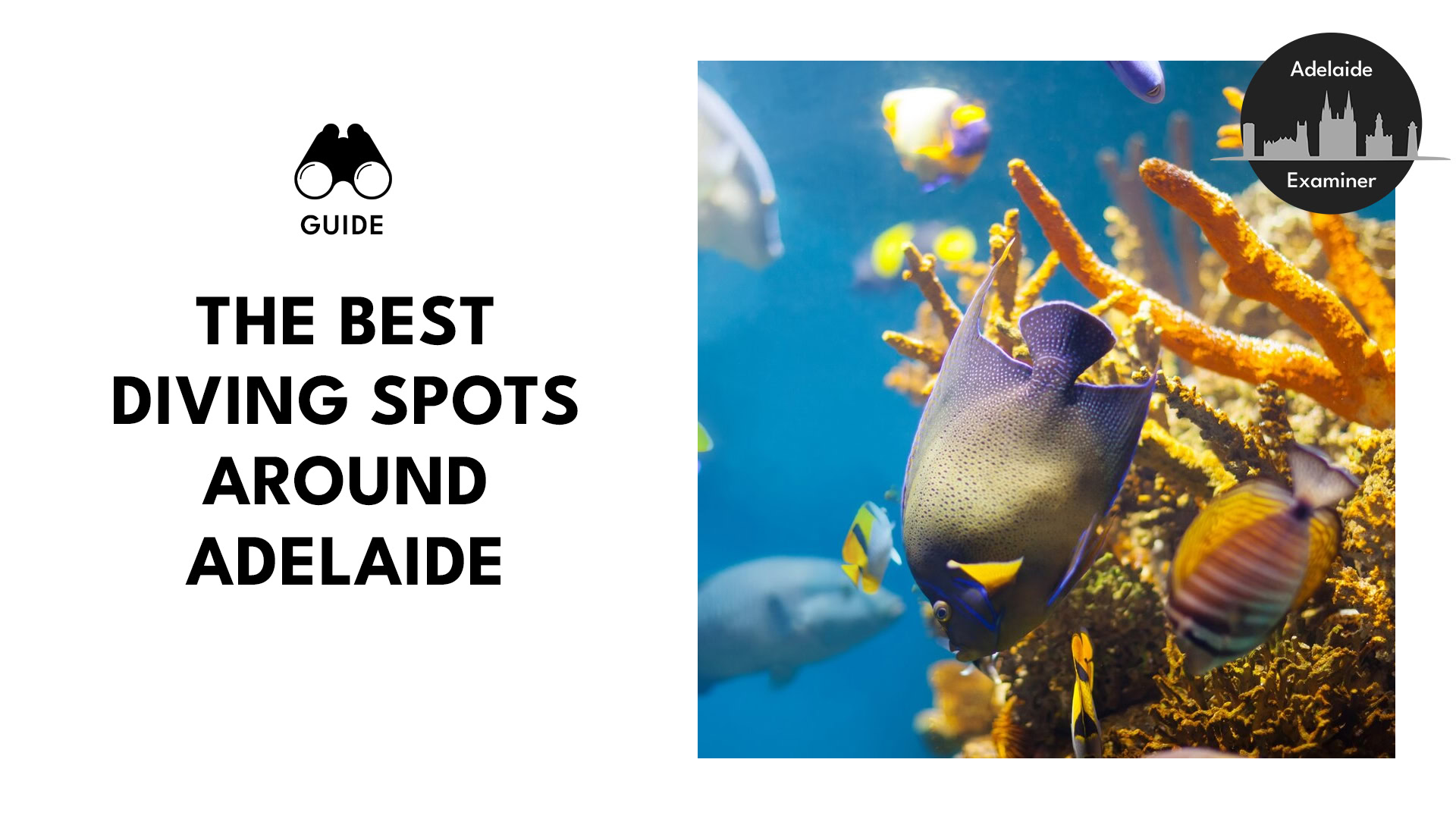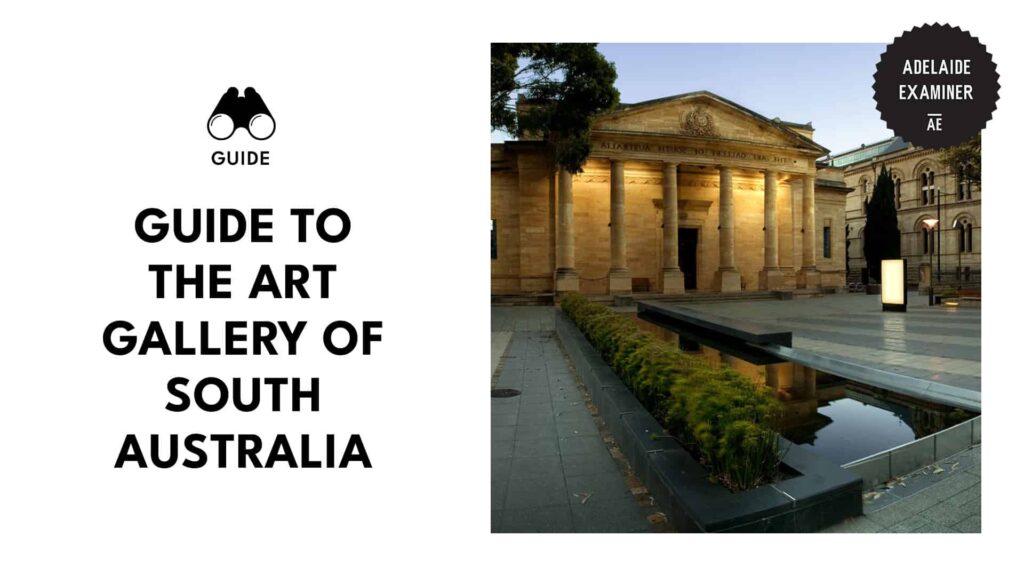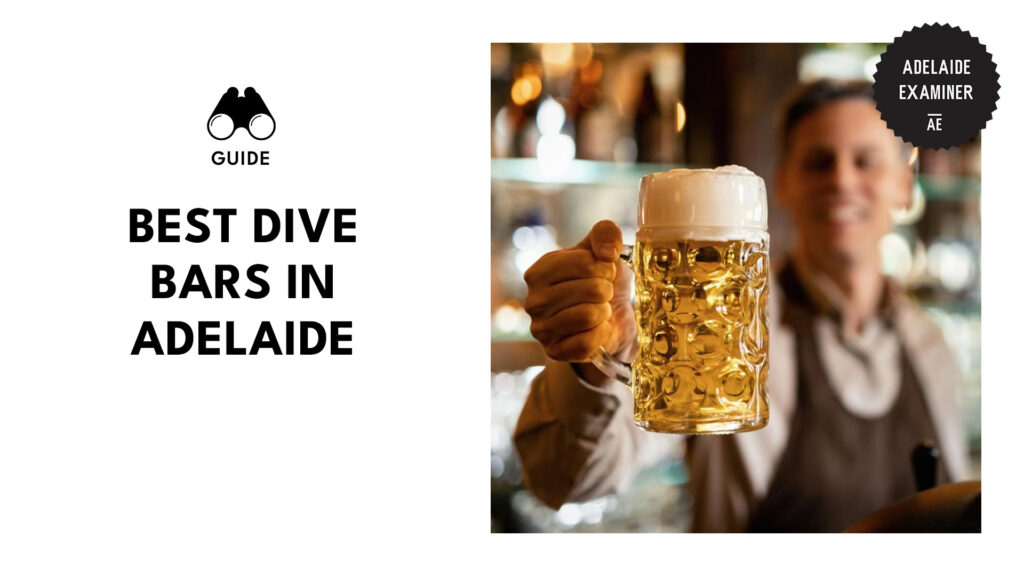
The Best Diving Spots around Adelaide That Hide History and Underwater Secrets
If you missed the memo, you can live your Aquaman or Ariel dreams in Adelaide—no trident or tail required.
“How?” you ask. Well, the diving spots around the city are pure underwater magic, whether you’re a pro seeking Earth’s rarest wonders or a first-timer just looking to get your flippers wet.
If you’re fishing for proof, all you need is to sink into the diving spots below. Sub-aquatic marvels await!
Whyalla Cuttlefish Migration
From pipstentjewellery
Google Map
Distance From Adelaide: 4 hrs and 16 mins
We’ll be honest: The drive to Whyalla can be a haul. The underwater light show courtesy of the giant Australian cuttlefish, though, is worth the gas, money, and effort.
Thousands of them flock to Whyalla’s water for some mating and egg-laying business, with the prime time being June and July. This isn’t any random gathering, too, as it’s the largest and most dazzling event of its kind worldwide.
We say “dazzling” because it’s essentially a Technicolor display. If you’re wondering why, it’s because the so-called “chameleons of the ocean” will morph into different shades around this time, giving snorkelers and divers a show for the ages.
Tips: For those who need a guide, Whyalla Diving Services and Experiencing Marine Sanctuaries offer tours and equipment.
We also suggest contacting the Whyalla Visitor Center at 1800 088 589 to learn more about cuttlefish viewing guidelines.
Second Valley
From kancha_travel
Google Map
Distance From Adelaide: 1 hr and 21 mins
Second Valley’s stunning shoreline is made for envy-inducing and Instagrammable beach selfies. The best part is there’s more than meets the eye.
For starters, seagrass channels here are chill-zones of ever-gliding southern eagle rays. Plus, if you dive deeper into the famous blue waters, you might catch a glimpse of the slippery leafy sea dragon.
If you’re unlucky, fret not, as there are still a plethora of blue devils and fur seals to see, The topography itself is worth a look, too, with majestic crannies and mysterious caves begging to be checked.
Tip: Gear renters are required to bring their diving certification. If you don’t have one, consider joining a diving course to get it.
The Norma Wreck
From the_dive_shack
Coordinates: -34.92850, 138.60075
If you’re into beauty born from disaster, the Norma Wreck is your diving jam. This one is a 40-minute boat ride north of Glenelg, and it’s a calm 15-meter dive that immortalized a 1907 maritime mishap.
Naturally, you’ll see rust and organism-covered relics of the vessel, like the bow, ribs, and masts. Yeah, it sounds haunting, but snappers, cuttlefish, crabs, and boarfish add a much-needed pop of life and color to the scenery.
Tips: Ensure you stay close to your dive boat for safety, as the Norma Wreck lies within a busy shipping lane where large vessels pass through.
Also, try to dive from October to May. The summer waters around these months are warmer.
Edithburgh Jetty
From michaels_bubbles
Address: 5-7 Edith St, Edithburgh
Distance From Adelaide: 2 hrs and 38 mins
We’ll always have high praises for Edithburgh Jetty. This is one of the first diving spots we’ve experienced, and its marine wonders are truly fascinating, particularly the leafy sea dragons, pygmy pipehorses, and potbelly seahorses.
Not to mention, the pylons are bursting with color from all the sponges, bristle worms, and sea squirts calling them home.
The site also attracts occasional swimmers like Port Jackson and Wobeggong sharks, although they didn’t pop by during our dive.
Tip: Night diving at Edithburgh Jetty is a must, especially if you’re looking for octopuses. Just keep a safe distance from the blue-ringed ones. Their venom is nothing to be messed with.
Ewens Ponds
From ck_dives
Google Map
Distance From Adelaide: 5 hrs and 11 mins
Ewens Ponds is so clear, we thought we were swimming in a pool, but with way better views, of course.
Ewens pygmy perch and galaxias are what you’ll typically encounter here. They love swimming by the surface, so diving deep isn’t a requirement.
The water is cold, though. It was around 13°C (55.4°F) when we dove, but note that the temperature can even drop to about 10°C (50.4°F).
Tips: You have to book to snorkel or scuba dive here. Also, remember that time slots are one hour each, allowing a maximum of two dives or snorkel sessions per person daily.
Furthermore, the ponds take a breather annually from September 1st to November 30th, so plan your underwater escapade accordingly.
Rapid Bay Jetty
From marinephotographer_troy
Address: St Vincent St, Gulfview Heights
Distance From Adelaide: 1 hr and 34 mins
Leafy sea dragons call Rapid Bay Jetty home, making it the prime spot to catch them in action. This also means you don’t have to go full-Subnautica mode—simply dive or snorkel by the shore.
You might also luck out with sightings of anglerfish, blue-ringed octopuses, and eagle rays. If the stars align, a playful dolphin or sea lion might make an appearance.
Don’t forget the pylons, too. Soft corals in yellow, blue, and orange hues turn them into a photographer’s dream shot.
Tip: There are no toilets by the jetty. Fortunately, you don’t have to disregard the call of nature, as there are toilets at the Rapid Bay Camping ground nearby.
Port Noarlunga Jetty & Reef
From vagabondiving
Address: 95/96 Esplanade, Port Noarlunga
Most of our teammates honed their diving skills at Port Noarlunga Jetty & Reef. This dive only goes about 3 to 6 meters deep—nothing too deep, but the critters you’ll meet are anything but ordinary.
On our last trip, for example, we met some local celebrities of South Australia’s underwater scene: blue devil fish, hermit crabs, cuttlefish, and a couple of Wobbegong sharks.
Heading to the thick northside vegetation was also a good move on our part. There, we spotted a leafy sea dragon blending in with the reef.
Tip: For newbies, start diving on the reef on the southern side of the jetty. It’s calmer and shallower than the main reef.
The Bluff (Victor Harbor)
From samhoffrichter
Victor Harbor’s The Bluff has spots catering to all divers. Rookies can practice at the 4-meter-deep sites, while seasoned pros can venture deeper for up to 40 meters.
You can spot numerous crayfish going about their daily routines here, especially if you check the crevices. Additionally, swimming into leafy sea dragons isn’t far-fetched, as they love The Bluff’s rocks and weeds.
The terrain is also worth taking snaps of. It resembles rugged landscapes embellished with sponge gardens, soft corals, and a myriad of massive crabs.
Tip: Afternoon is usually the best time to dive here. Around this period, rougher winds are minimal and waves are calmer.
Star of Greece Shipwreck
From freedomstudios
Address: 1 Esplanade, Port Willunga
Exploring the Star of Greece Shipwreck is one of our many summer traditions. It’s shallow at just 4 meters, plus the wreckage’s eerie beauty and thriving reef are top-tier backdrops.
Diverse fish also roam this 130-year-old resting site. Crabs, old wives, and whiting are the usual species, but there’s also a chance of bumping into dolphins.
The only snag is that the buoy marker that once guided divers here is gone, making locating it a hassle, especially for first-timers. We suggest visiting during low tide to spot the shipwreck easily.
Tip: Bringing a car? Park at the sandy car park located at the end of Star of Greece Rd for the easiest access to this dive site.
Port Hughes Jetty
From cherry_sea_witch
Google Maps
Distance From Adelaide: 2 hrs and 1 min
“Pretty” and “simple” might be the most appropriate adjectives for Port Hughes Jetty. The site overflows with schools of fish, while the max depth is just 6 meters.
Bits and bobs of pylons also infuse more color into the ocean floor. The real prize, though, is the scuttling decorator crabs, which all look straight out of Pokémon.
Tip: Don’t forget your fishing or crabbing gear. The waters brim with squid, garfish, tommy ruff, and blue swimmer crabs—all perfect for a post-dive bite.
Grange Tyre Reef
From M & M Diving
The 15-meter-deep Grange Tyre Reef proves that man-made reefs can be stunning, too. To begin, the unconventional reef harbors a number of leafy sea dragons.
Species like whiting, bullseyes, silver drummer, and even spider crabs also use this site as a breeding ground.
Tip: Watch out for loose regulators and gauges getting caught in tire straps. Even for pros, they can cause unexpected and threatening tangles.
Milkies Reef
From crab.e.cam
Coordinates: S 34°59.189′, E 138°27.241′
Milkies Reef is a secluded underwater haven that’s about 4.5 km west of Glenelg.
What sets this dive site apart is its lack of tangling hazards, but you still have to be extra careful due to the site’s poor visibility.
As for the marine wonders, expect to encounter nudibranchs, spider crabs, blue devils, cuttlefish, and a few crayfish.
Tip: Milkies Reef is expansive. Use a compass or GPS for navigation, especially since the visibility here isn’t the greatest.
Glenelg Barge
From dive_buddy_brad
Coordinates: 34:58:729 S 138:26:462 E
The Glenelg Barge, originally a Port River hopper barge, sank in 1984. Nowadays, it’s a 15 to 20-meter diving hotspot pros love peering into.
Within its rusted confines, a world of bullseyes, strongies, silver drummers, spider crabs, and old wives awaits. Nudibranchs and cuttlefish may also be spotted, but you have to check out the rocks and reefs’ nooks and crannies to do so.
Tip: This site is only accessible by boat, so be sure to explore options for boat rentals in the Glenelg area.





